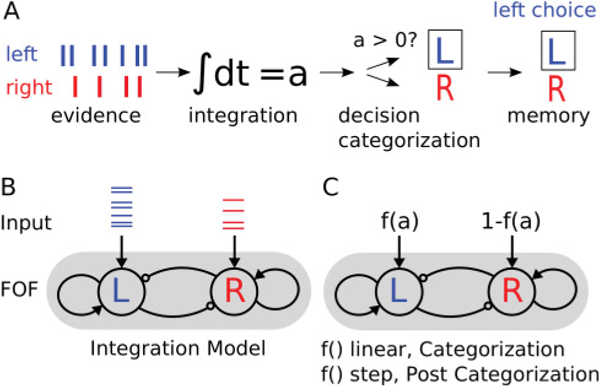Figure 2:

Conceptual stages of decision making. (A) We consider three stages of decision making that might be perturbed during FOF inactivation: integration, decision categorization, and decision memory. In this cartoon, seven clicks are presented on the left and four on the right. The evidence is integrated, categorized into a go-left trial, and the decision is remembered. (B) Schematic of the integration model. Two nodes represent populations of neurons that self-excite and have cross-inhibition. Each node gets feedforward input consisting of the evidence click trains. (C) Schematic of the categorization and postcategorization models. The accumulated evidence a is passed through a thresholding function f () that has a parameter g describing how “soft” or “hard” the thresholding is and then used as inputs into the model. In the categorization model, the parameter g is fixed such that the function f () is linear, so that categorization of the value of a into a left or right choice occurs within or after the mutual inhibition model. In the postcategorization model, the parameter g = 0; then f () becomes the Heaviside step function, indicating the choice has already been categorized before entering the mutual inhibition model. When fitting the postcategorization model, we allowed g to be a free parameter in order to fit the degree to which inputs have already been categorized.
